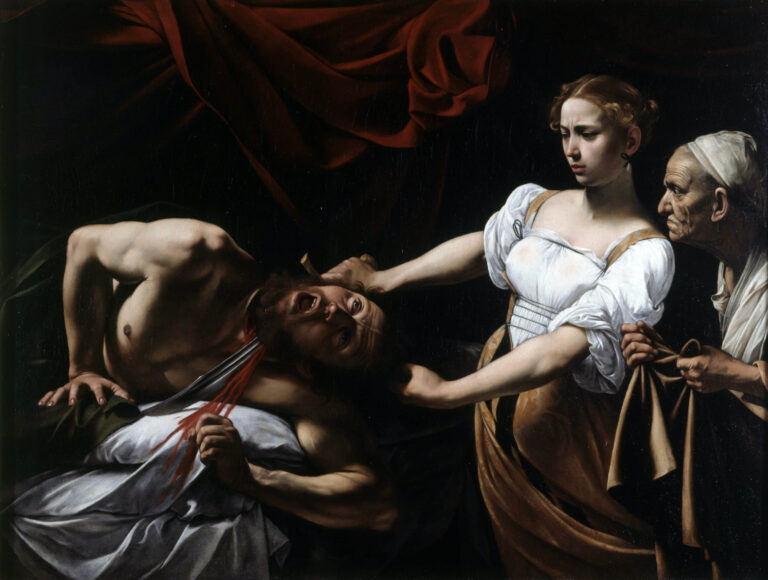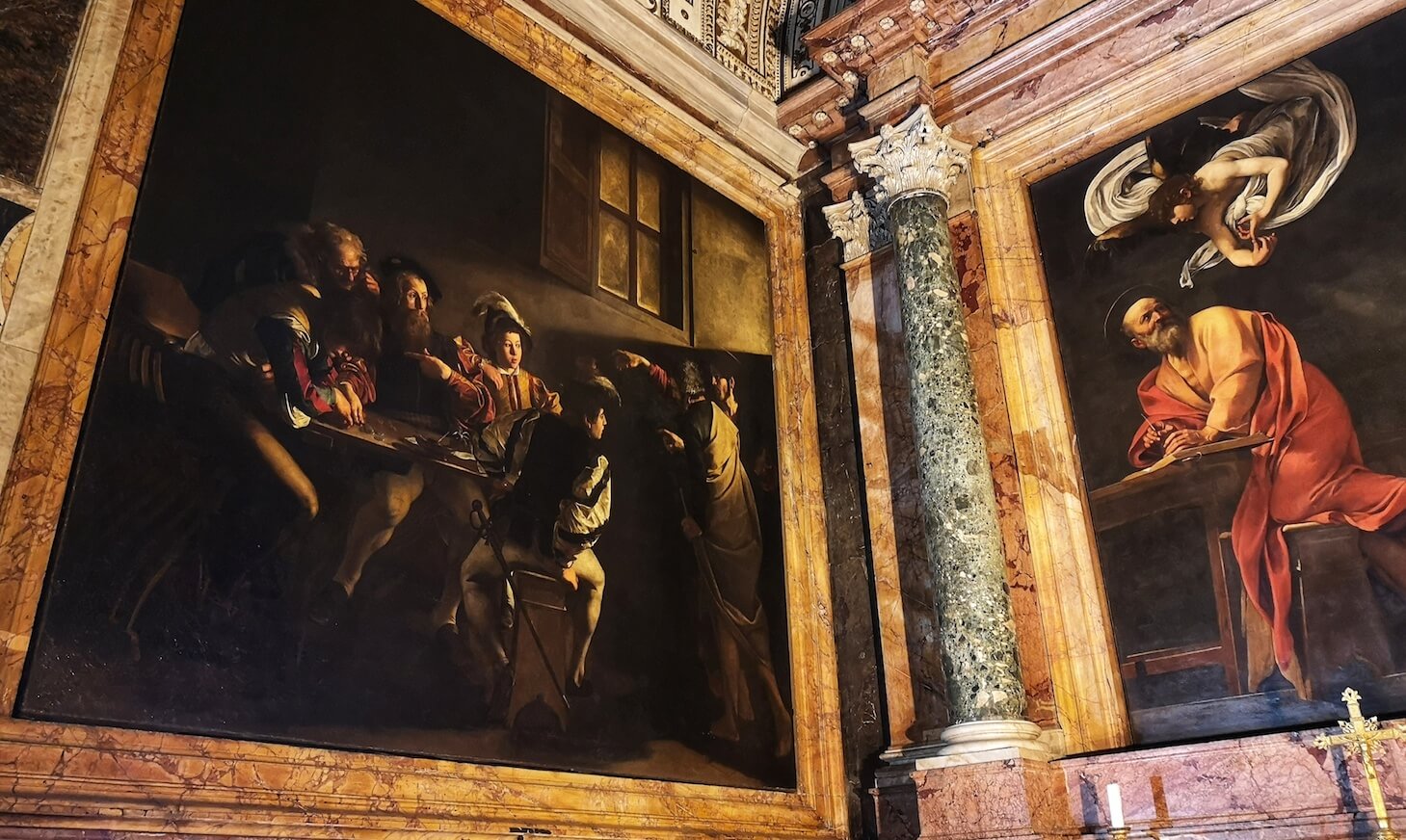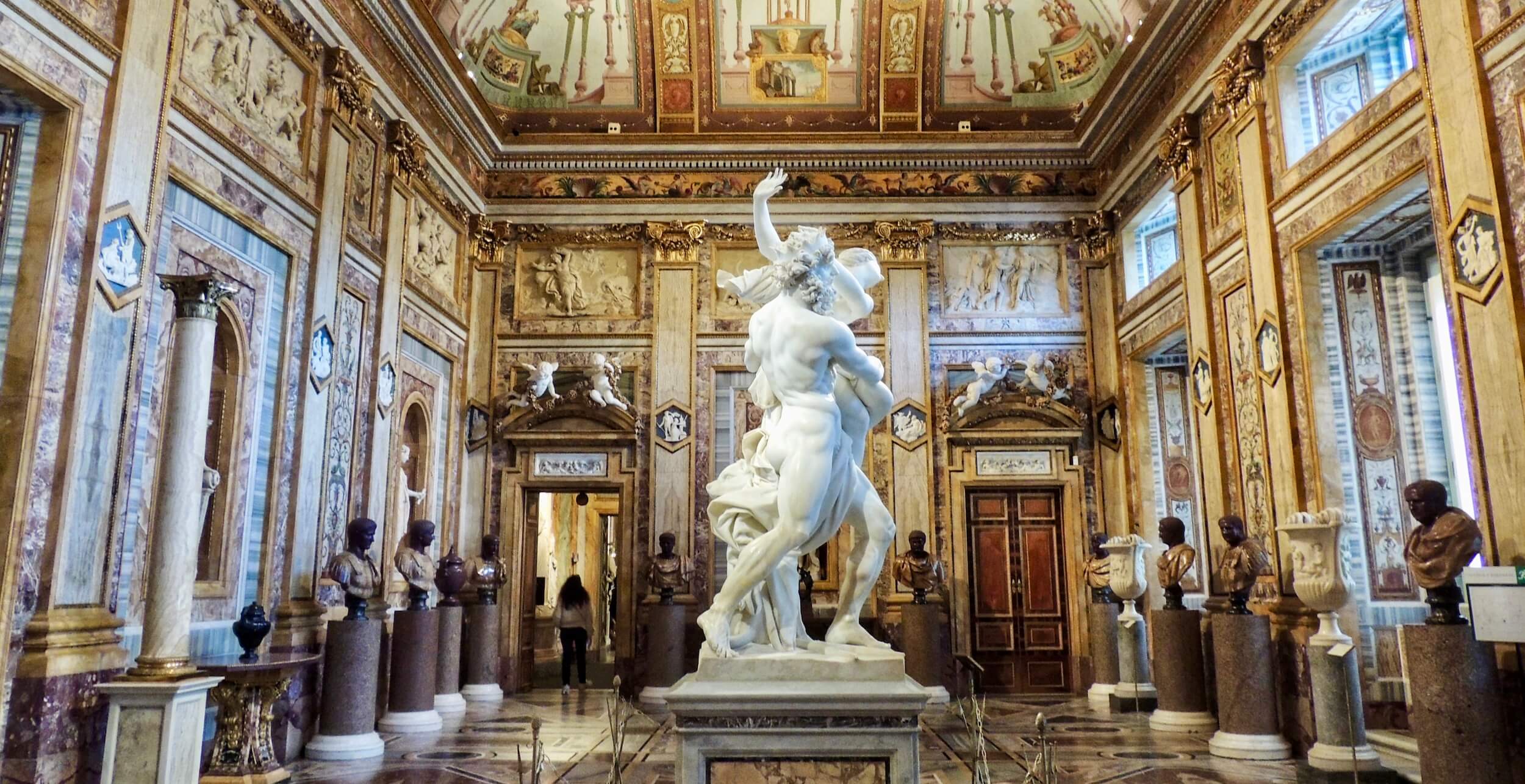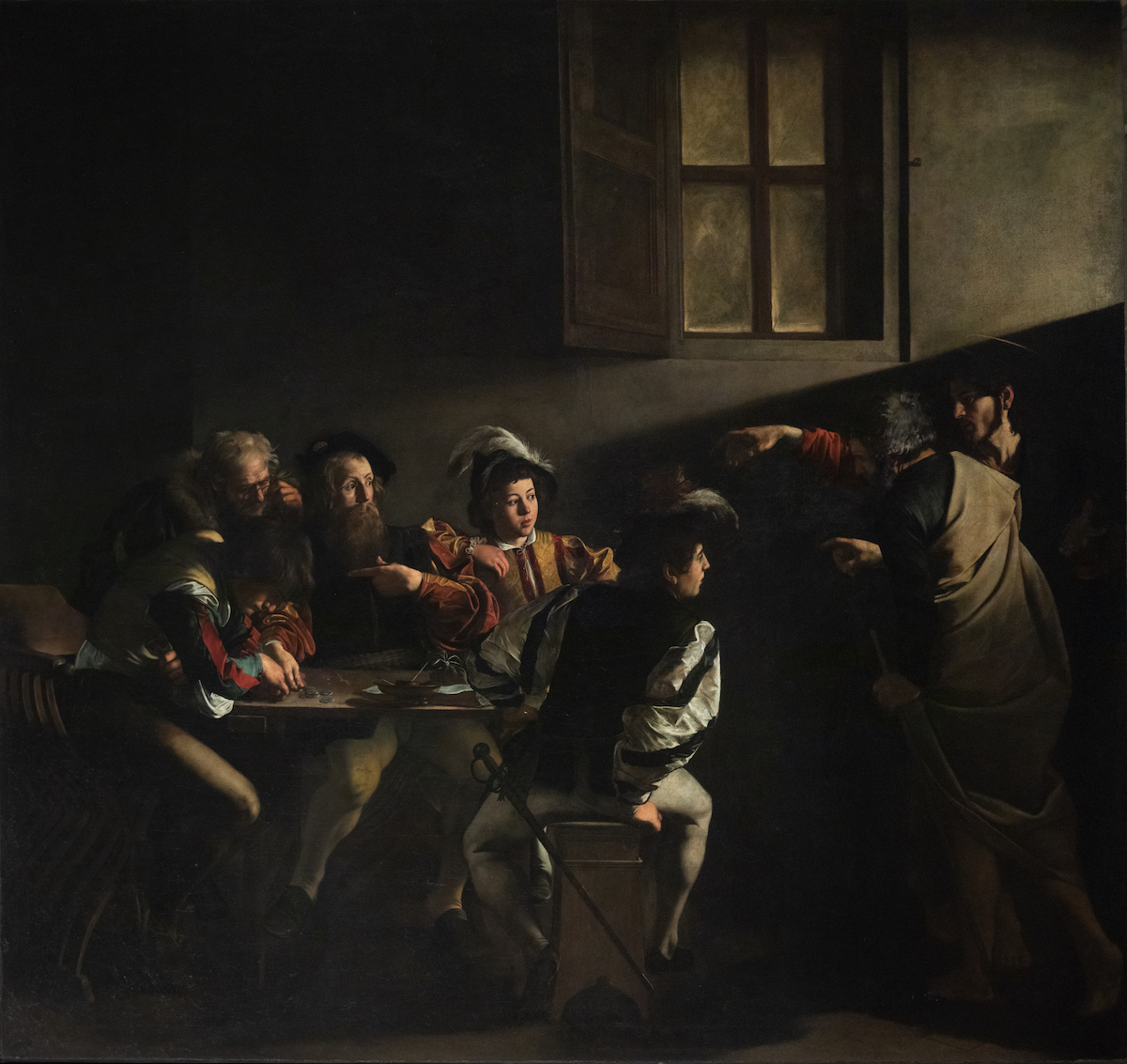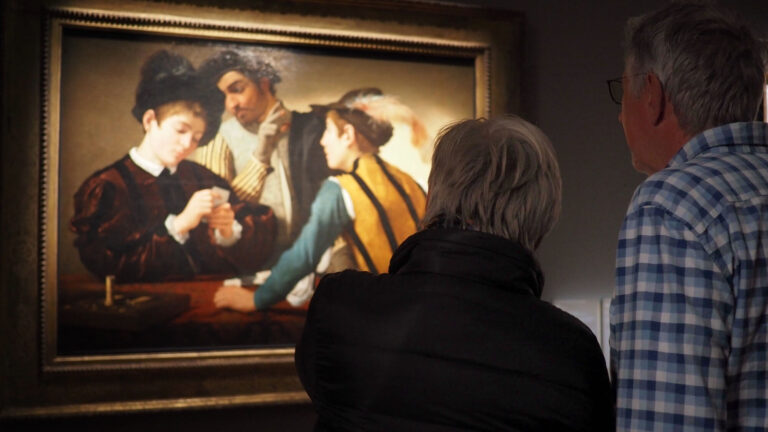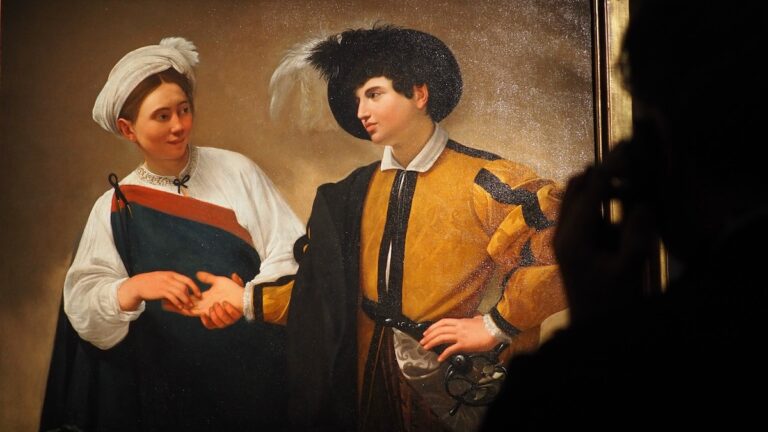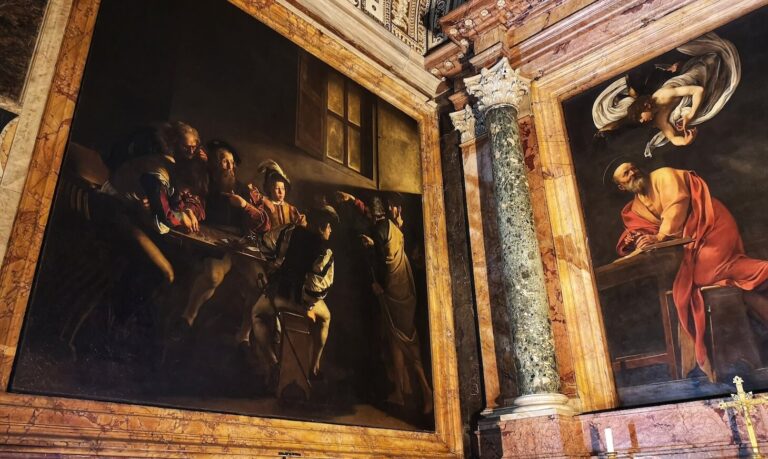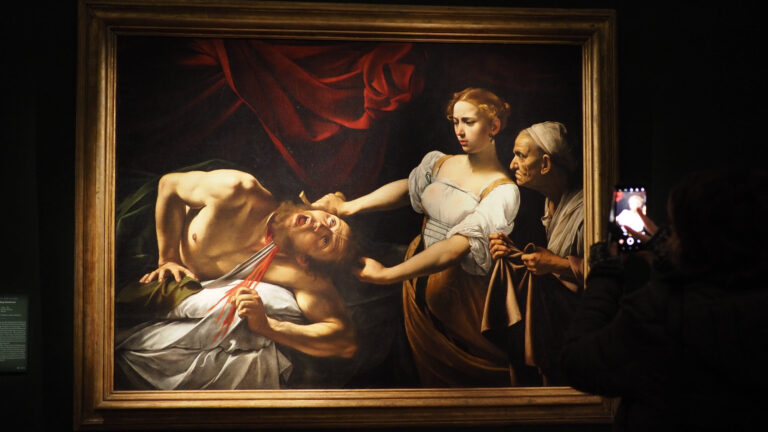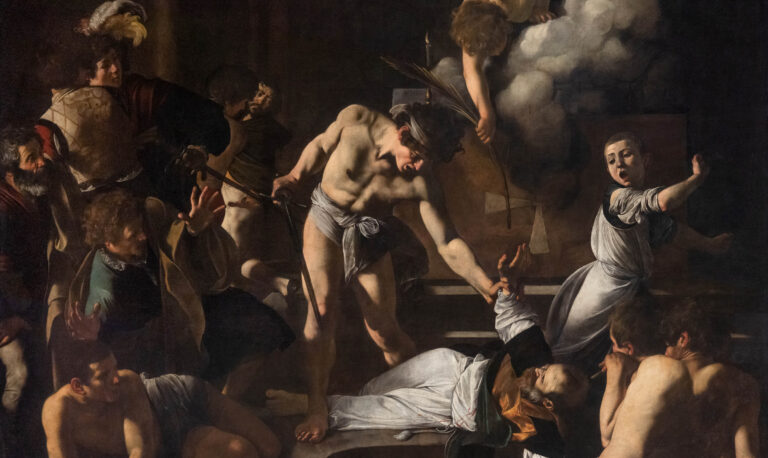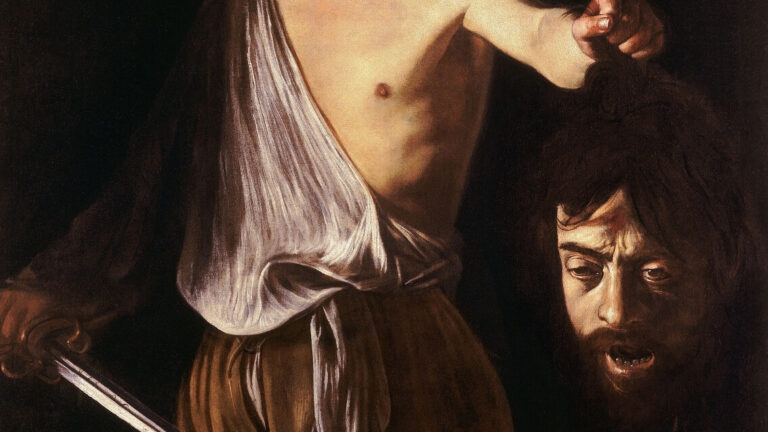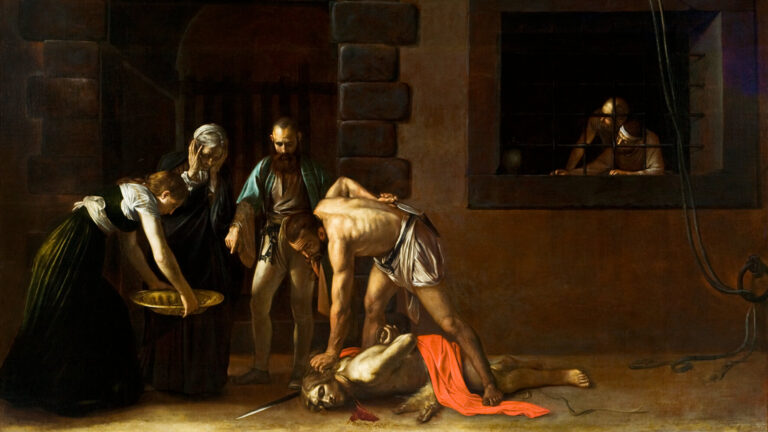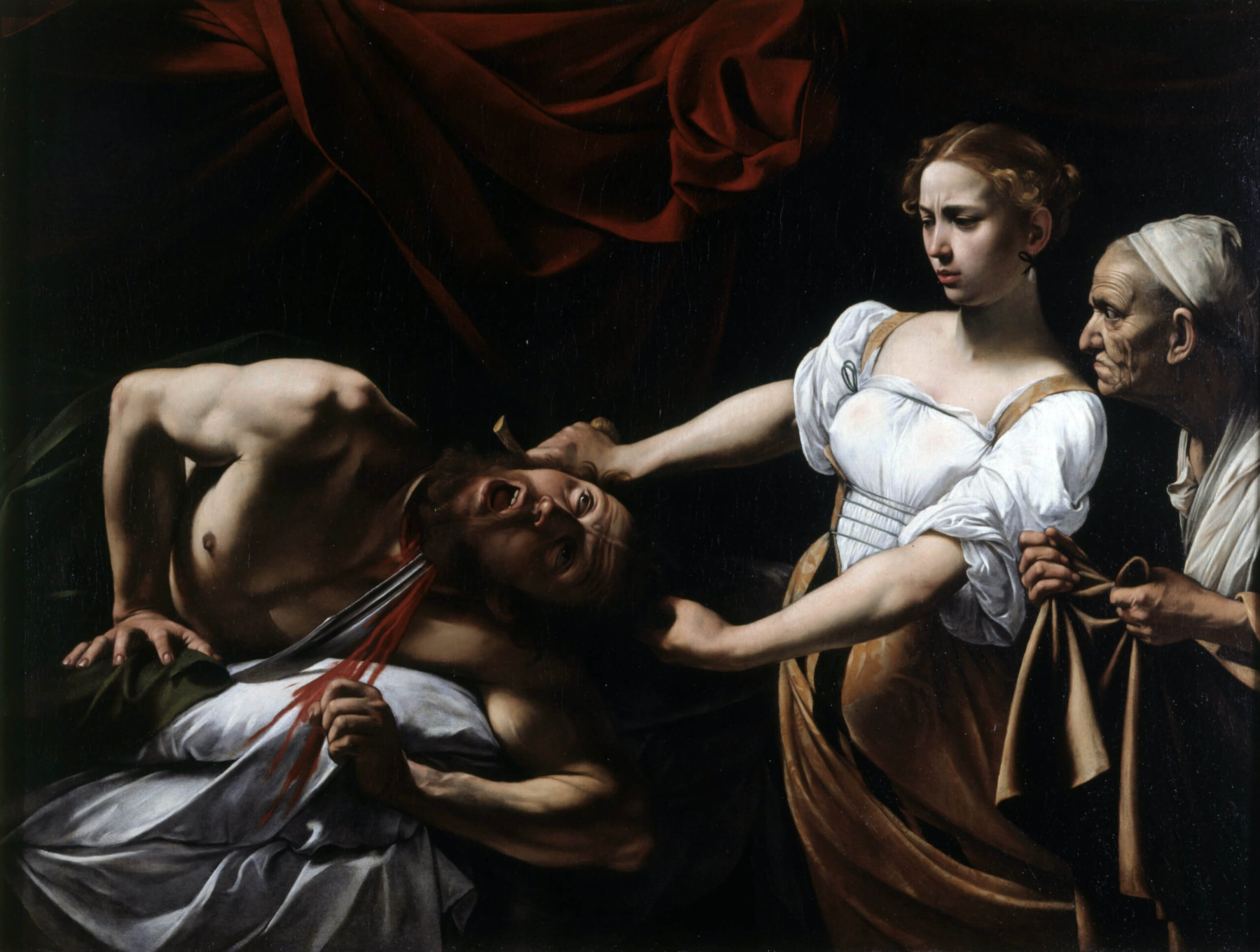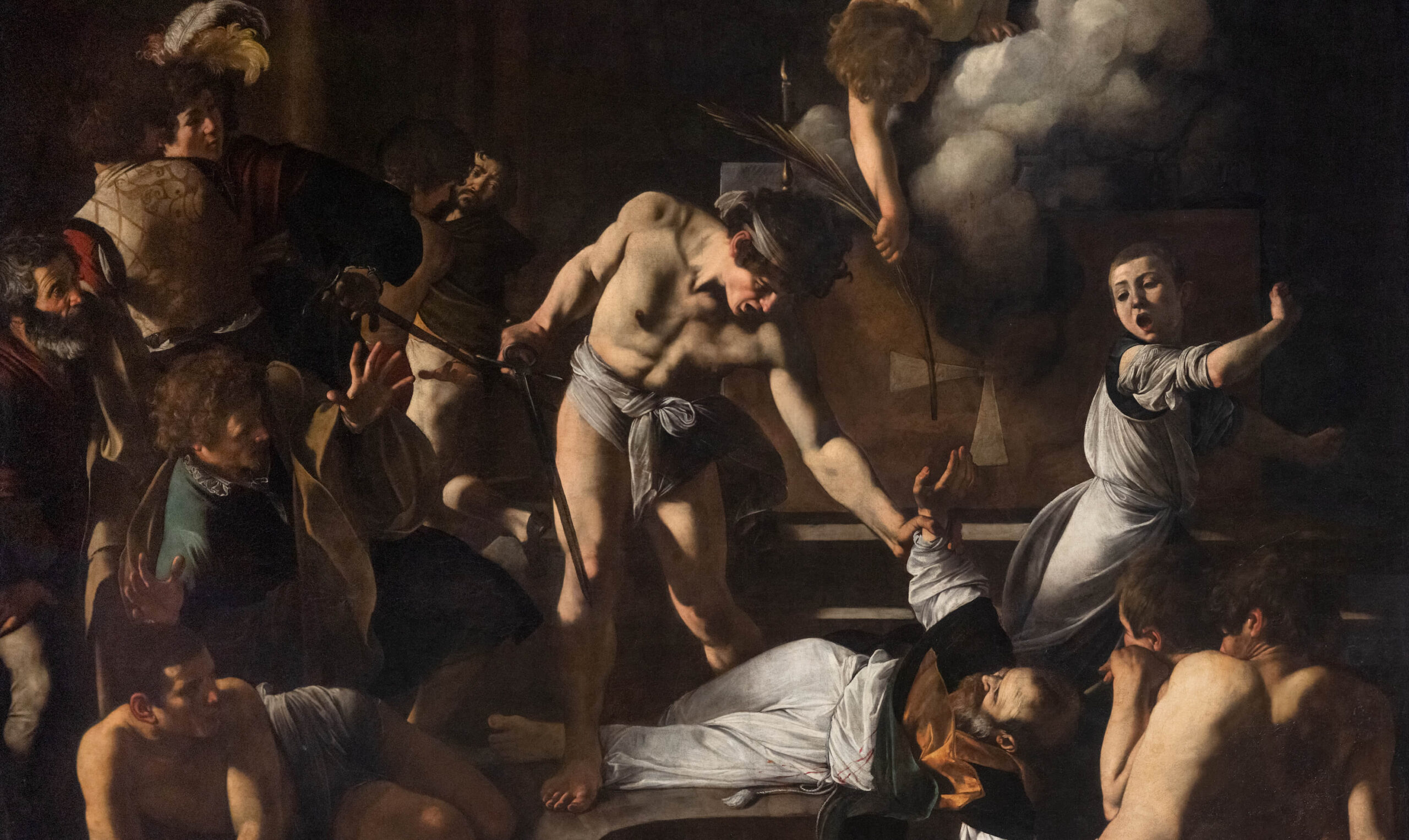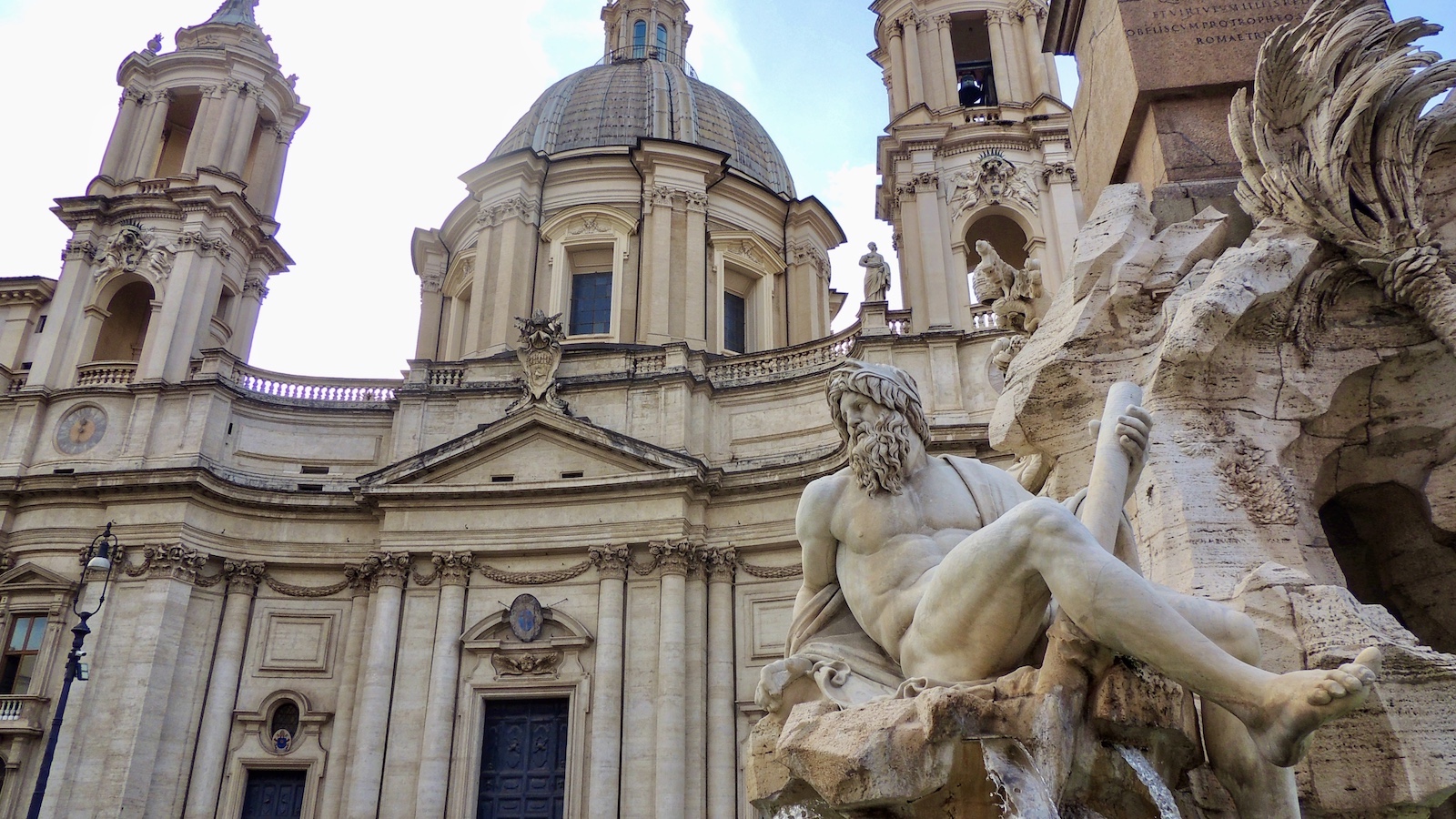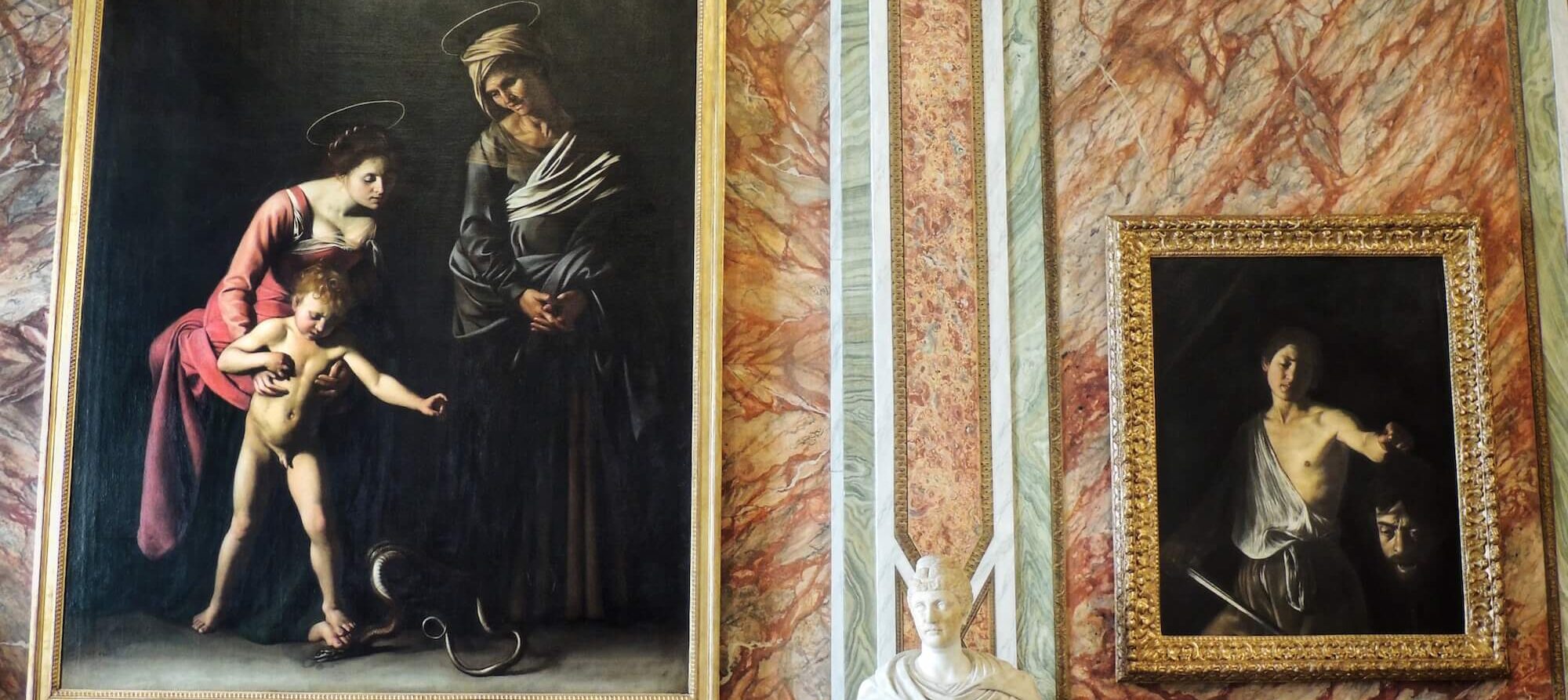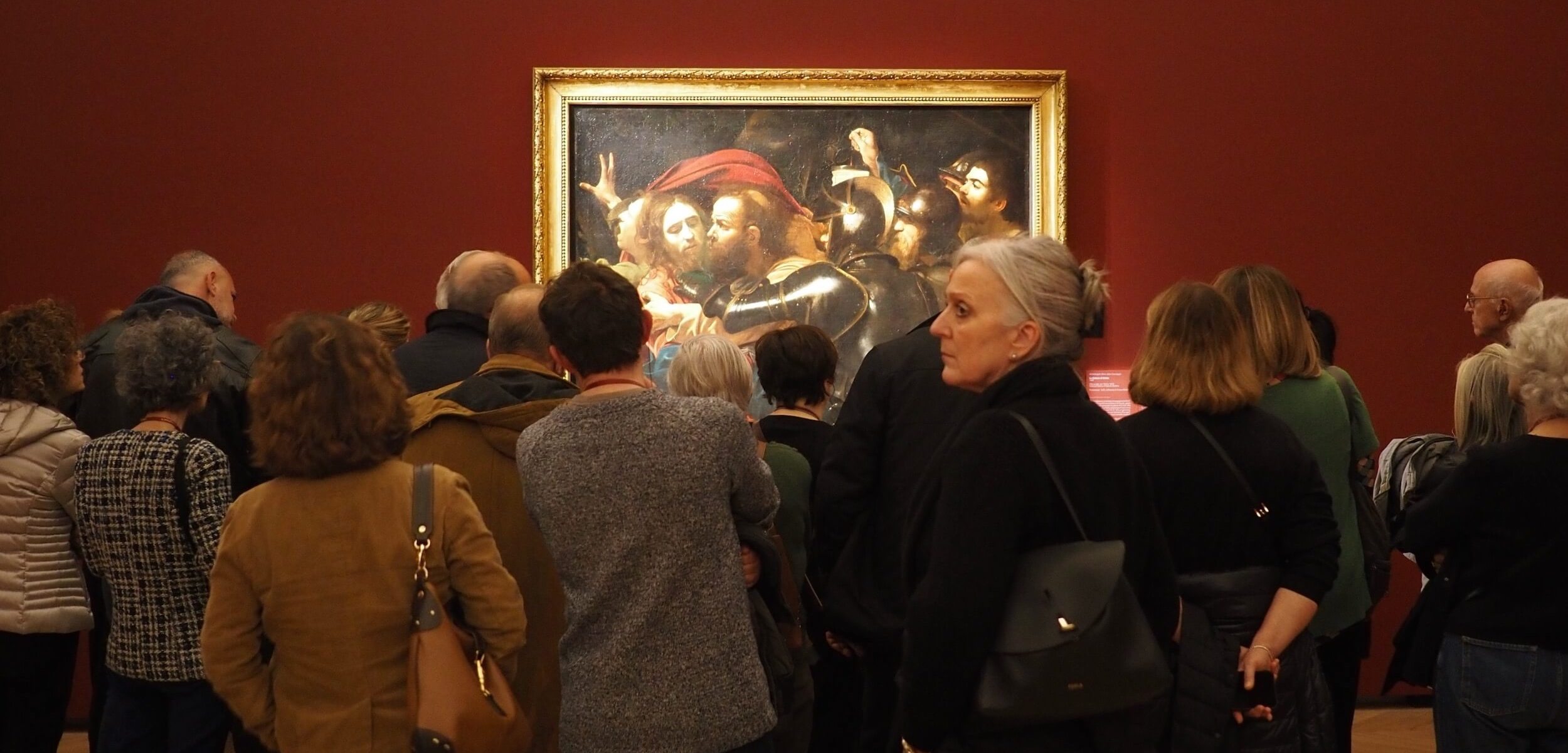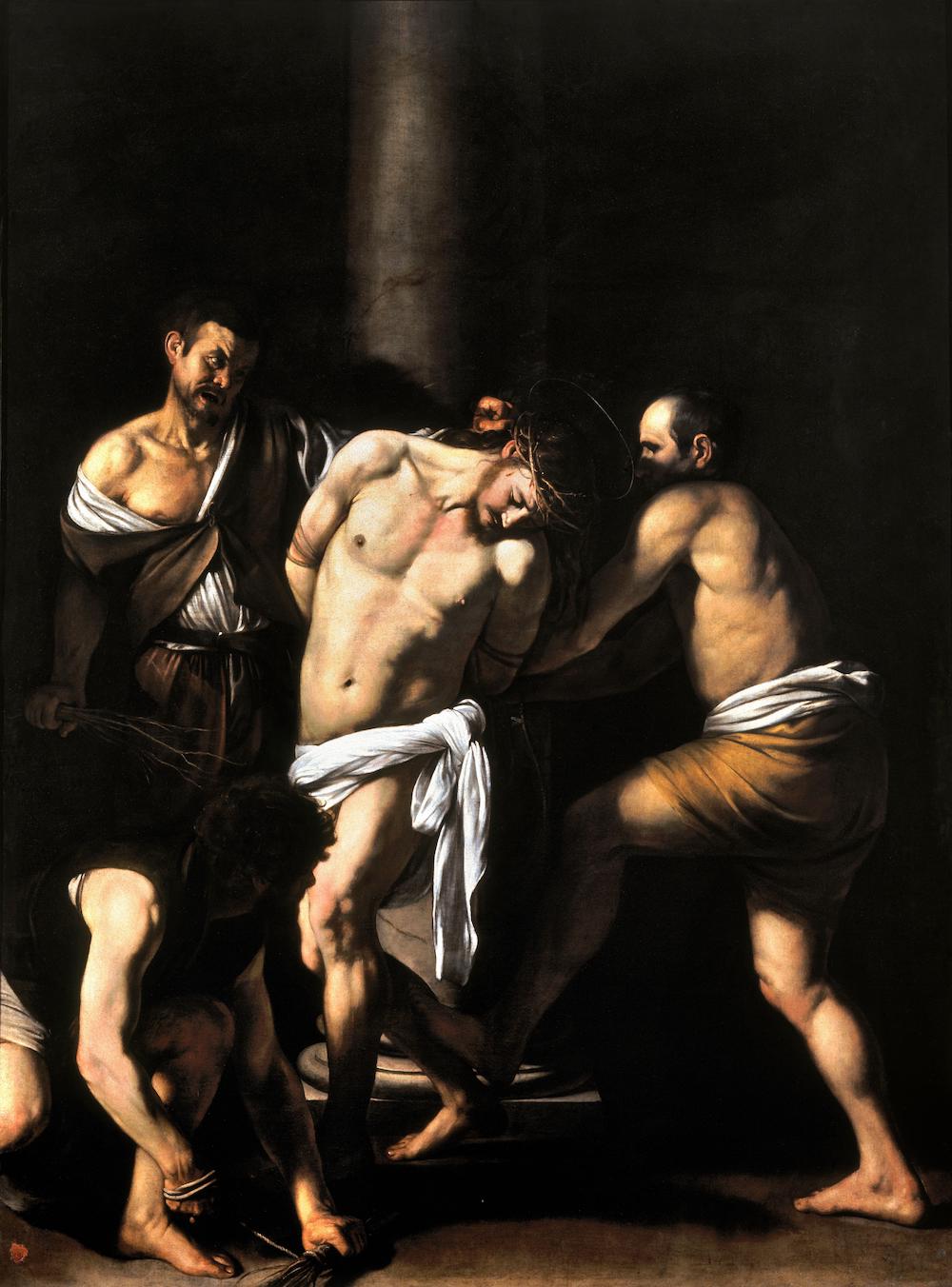The artistic world of Michelangelo Merisi da Caravaggio is quite literally a world of darkness and light.
The most original painter of his, and perhaps any generation, Caravaggio’s radical approach to what painting could be created shock-waves in the world of art, dramatically ushering in the age of the Baroque. Fashioning works of sublime beauty from the inky blackness of his imagination, he invented a new language of pictorial drama that was all his own.
But with Caravaggio, the art of line and colour is only the beginning. His life story, always teetering from one controversy to the next, retains an enduring fascination to the modern imagination. Through Eternity’s Caravaggio in Rome tour follows in the footsteps of the controversial genius as he spent a madcap decade painting, brawling and drinking on the streets of the Eternal City over 400 years ago. To give you a taste of what to expect on our itinerary, read on for our take on Caravaggio’s unique place in Rome’s rich artistic tapestry.
Caravaggio Tours
Follow in the Footsteps of the Dark Genius
Rome 1606 – Two men are playing a deadly game on one of the many tennis courts that dot central Rome. They are armed not with rackets but with swords, and one of them is about to die.
While fatal duels were nothing unusual in the violent landscape of 17th-century Rome, the identity of the protagonists made this confrontation different. For the man who landed the fatal blow was none other than Michelangelo Merisi da Caravaggio, brightest star of the Roman art world and already a fully-fledged superstar at the tender age of 35.
The details remain shrouded in mystery. Some say a disagreement over a disputed bet spiralled out of control. Others speculate that the bellicose Caravaggio and his young antagonist, Ranuccio Tomassoni, were fighting over the affections of a local prostitute – and that the murdered man was her pimp. One thing alone is certain. Caravaggio inflicted upon his rival a mortal blow that left him bleeding out on the court.
Caravaggio probably had no intention to kill Ranuccio– he had often been involved in violent tussles before, but always stopped short of doing anything that would ruin his reputation. Indeed, the nature of his fatal thrust tells another story. In severing Tomassoni’s femoral artery, Caravaggio missed his groin by only a fraction. In the highly symbolic and violent world of 17th century Rome, the logic of such a strike would have been clear to all.
Painful, embarrassing and sexually debilitating, Caravaggio intended that the memory of his tangle with the young painter would stay with Ranuccio for the rest of his life. But the aim of Caravaggio’s sword was not as true as that of his brush, and suddenly the city’s most renowned painter was a wanted man.

That an act of violence, rash and brutal, would be the defining moment in Caravaggio’s life is not surprising.
Rome at the end of the 16th century was a very dangerous place indeed, and the city that the young Caravaggio found himself in when he reached Piazza del Popolo for the first time in 1592 was a rough tapestry of bars and brothels, a stomping ground for brigands, pimps and mercenaries where a misspoken word or an unintended slight could mean your life.
The names of the inns may have changed and the whorehouses may be gone, but the narrow streets and alleys of the Campo Marzio have changed remarkably little since Caravaggio and his cronies swaggered along them 4 centuries ago, swords at their sides.
The young painter was immediately at home in his new surroundings. Caravaggio had a record a mile long, and much of what we know about him comes from legal proceedings and police records. Trouble seemed to dog his every footstep, and for 14 years he charted a madcap course through the streets of Rome. He fought with waiters over the proper way to cook an artichoke; he shocked his landlady with lewd songs; drinking and gambling were his lifeblood, and brawling became second nature.

But Caravaggio’s dissolute ways did wonders for the authenticity of his art. Caravaggio was on the way to becoming the world’s first great urban artist, an exuberant recorder of the life and soul of the city in which he worked. To gain a taste of this world and the dangers and temptations that it brought, all we need to do is explore the paintings that Caravaggio painted during these first years in Rome.
Gypsies slip precious rings off the fingers of unsuspecting dandies; louche teens drunkenly sip wine from elaborate goblets, and money-lenders crowd around cramped tables, counting up their daily takings with grim avarice.
Above all, it seems that it was the spectre of violence – an ever present fact of life in the teeming and impoverished city – that piqued the curiosity of the young Lombard more than anything else. A contemporary of the painter reprovingly described how “after a fortnight’s work he will swagger about for a month or two with a sword at his side and a servant following him, from one ball-court to the next, ever ready to engage in a fight or an argument, so that it is most awkward to get along with him.”
Such controversy did little to dim his rising star, and with each new indiscretion Caravaggio’s reputation only grew greater. Violence in all its gory drama soon begin to permeate his work; two of the most majestic and successful canvasses that Caravaggio produced in Rome were shocking in their graphic violence, and took the art world by storm.

In the first, Judith Beheading Holofernes (now in Rome’s Palazzo Barberini), completed in 1599, Caravaggio synthesises Biblical history, the murky Rome of 1600 and his own violent fantasies in a creation of remarkable originality and skill. The violence before us is clinical and hypnotic, and it is impossible to take your eyes off the ribbons of blood that spurt across the canvas and stain it crimson. Whilst the subject had long been a favourite in Italian art, this is not religious painting as we know it.
That same year, Rome was abuzz with the talk of one of the most notorious executions in its long history. A young noblewoman, Beatrice Cenci, was convicted of murdering her abusive father in a juicy and scandalous plot. Despite public sympathy lying entirely with the accused, no leniency was forthcoming and Beatrice was duly beheaded outside Castel Sant’Angelo in an enormous public spectacle.
Caravaggio was probably in the crowd watching on that day, and in the dark drama of the painter’s latest canvas its first viewers must have recognised the contours of their own world.
Caravaggio’s Judith, the biblical heroine who saved her people from destruction by slaying the Assyrian general in his sleep, is certainly not the archetype of an ancient Israeli widow – she seems more 16th-century prostitute than religious paragon, and her wrinkled companion is more ancient procuress than faithful maid. Sex and violence mingle in a potent cocktail which unsurprisingly divided Caravaggio’s contemporaries, with the traditionalists finding his painting’s conflation of sacred past and seedy present an indecorous and unforgivable provocation.
Caravaggio was courting controversy, but the cocksure Lombard cared little for the opinions of his peers, safe in the conviction that he had found a winning formula – the often brutal world of the Bible had found its most uncompromising and original interpreter.

A year later, and the violence of biblical drama is once again at the tip of Caravaggio’s brush. This time the commission demanded a depiction of the Martyrdom of Matthew for San Luigi dei Francesi’s Contarelli chapel, and the tension is electric. A scantily clad youth apparently awaiting baptism has risen up from the crowd of the faithful, sword in hand, and is poised to dispatch the unsuspecting saint. An altar-boy flees in panic as a motley crowd looks grimly on, powerless to intervene. But it is a scruffy cloaked figure lurking in the shadows, ready to make his furtive escape, whose presence interests us the most.
The figure is none other than Caravaggio himself, repulsed and yet beguiled by the terrible power of violence, violence of his own creation. He glances over his shoulder, scared yet transfixed, unwilling or unable to aid the stricken saint. To insert oneself into a painting as a kind of signature was nothing new, but never so melodramatically as this.
Art and life for Caravaggio are making their inexorable way towards each other. They are drawing ever closer, and will eventually meet in that bloody drama of the tennis court. Caravaggio’s increasing daring with the brush was unfortunately matched by an increasing daring on Rome’s dark and dangerous streets, and the watcher in the shadows would soon become protagonist.

In that instant of transformation from observer to perpetrator, Caravaggio lost everything. From the most famous painter in Rome, a man feted by cardinals and aristocrats, Caravaggio was reduced to an exiled fugitive, fleeing justice and pursued by unknown assassins out for revenge. There was a price on his head and a reward for anyone who produced it. Like the impoverished pilgrims whom he painted with such skill in the churches of Rome at the height of his powers, Caravaggio was forced to humbly seek absolution from the all-powerful Christian hierarchy.
By now believing in his own mythology and the transcendental power of his art, he decided to do so through what he knew best: painting. Caravaggio would paint his plea in a gift to the powerful Cardinal Scipione Borghese, the one man capable of granting him clemency. Now hanging in the gallery of the Villa Borghese, what Caravaggio came up with was one of the most startling and unexpected self-portraits in the history of art.
Ostensibly this is the narrative of David and Goliath. The scene is stripped down and bare, and unlike Caravaggio’s earlier scenes of biblical violence, here the bloody deed has already been completed. But why is it so melancholic? Where is the triumphant David that we all know so well? The young shepherd looks down sadly at the giant’s head dangling from his grasp, and our eyes are drawn too to his terrible disembodied face. Those features seem familiar – indeed, it is Caravaggio himself who returns our gaze once more.
Much had changed since Caravaggio had imagined himself watching Matthew’s untimely demise. The painter is no longer a mere witness. He is the vanquished villain of the piece, a lonely wanderer at the mercy of the slings and arrows of outrageous fortune in a wilderness darker and more brooding than anything even he had ever before painted.
It is an abject statement of the artist’s contrition, an admission of the gravity of his crimes and a plea that he has suffered enough – all dressed up in the guise of one of art’s most famous subjects. Art and autobiography have become so blurred as to be all but indistinguishable – Caravaggio’s retreat into the world of his paintings is nearly complete.

Caravaggio would never again return to Rome. His years on the run led him to Naples, Malta and beyond, leaving artistic masterpieces behind him like so many calling cards. Pursued by unknown assassins, the sins of his past never left him in peace. His art speaks of the lonely desolation of these years, culminating in another scene of beheading, this time of John the Baptist, painted for the powerful Knights of Malta. It was the only painting that Caravaggio ever signed, and he did so in the livid blood oozing from the saint’s neck. Caravaggio’s conviction of his unending persecution could hardly be rendered more clearly.
At long last the papal pardon Caravaggio so desperately wanted was forthcoming, but it came too late for the doomed painter. Desperately trying (and failing) to return to the Eternal City, the great artist was destined to die feverish and alone on the Tuscan beach of Porto Ercole in the blinding light of an Italian morning.
Caravaggio had conjured into life a startlingly original, a chilling world of executions, assassinations, and martyrdoms. Those dark fantasies overtook him, and with a tragic inevitability became his own reality.
Obsessed with his own work, he had become a part of it. His paintings are a litany of victims, from blameless saints to notorious villains getting their just desserts, but surely in Caravaggio’s mind, he possessed something of all of them – something of the devil and something of the divine. Like the Narcissus beguiled by his own reflection that he once painted for the learned amusement of the Roman aristocracy, to find Caravaggio we must seek him in his images.

Follow the Trail of Caravaggio

